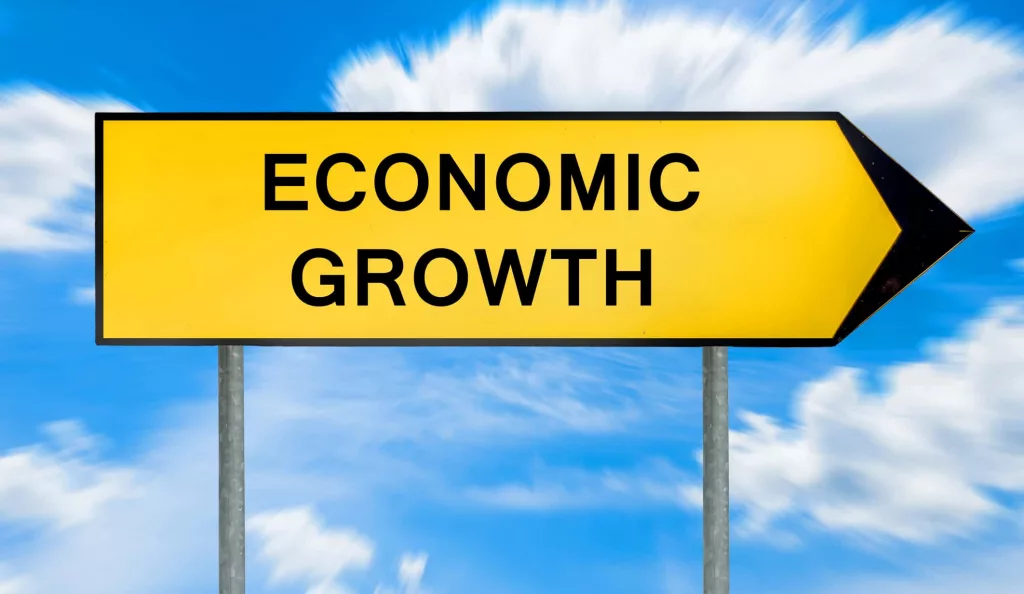Market indicators in recent months have been all over the place, but Professor Brian Long at Grand Valley State University says his industrial sector research shows that the pace of growth which had been measured as “slow growth” as recently as August, kicked up a notch to a more quickened pace in September, but there are still concerns on the horizon.
Long, who is Director of Supply Chain Management Research at the Grand Rapids Institute for Supply Management, says that September’s economic pace for the West Michigan industrial economy “picked up a little more” from that earlier slow growth pattern at the end of summer. By way of measurement, Long’s all important and closely watched New Orders Index of business improvement edged up to +28 from +21. Further signs of a growth spurt came from his Production Index which rose sharply to +29 from +16 a month earlier.
Additionally, activity in the purchasing offices reflected in Long’s Purchasing Index bumped up to +21 from August’s +15 reading. Long notes, however, ” Just as last month, the comments from our survey participants continue to articulate concerns over the uncertainty brought on by the tariffs, although the impact has so far not been as catastrophic as some had feared.” He goes on to say, “The recent new accord with Canada and Mexico has been well received, but it is still not firmly in place.”
When drilling down to individual industries, Long tells us, “Growth remains positive for most sectors in the West Michigan economy,” adding, “Although auto sales continue to soften, the decline has so far been very orderly. Hence, business conditions for the local auto parts suppliers remain positive.” Looking at West Michigan’s preponderance of office furniture suppliers, Long reports, “Although the office furniture business plateaued last year, the new tax incentives have continued to boost many segments of the industry throughout 2018.” Meanwhile, he reports that the local firms that are producing capital equipment are also continuing to benefit from the tax incentives enacted in late 2017. He concludes, “For most of our industrial distributors, business conditions seasonally upticked in September.”
Turning his focus to West Michigan unemployment numbers, Dr. Long says, “Our September Employment Index came in at +29, a nice improvement over last month’s index of +21,” and further notes, “Although much of Michigan’s comeback from the Great Recession can be attributed to West Michigan, it is good to see that some of the counties on the east side of the state are finally starting to prosper as well.”
Things become a little more worrisome when Long turns attention to the world of business confidence. He reports, “Although our local statistics remain positive, the optimism continues to fade.” He says, the West Michigan index for the Short-Term Business Outlook for September, which asks local firms about the perception for the next three to six months, ticked lower to +25 from +32. He suggests, “Although the index is still positive, the gain has eroded since February’s reading of +51. Fortunately, the Long-Term Business Outlook, which queries the perception for the next three to five years, remained unchanged at +33.” Long concludes, “Although these readings do indicate a little concern about where the West Michigan economy is headed, the overall mood is still positive.”
In summarizing his report, Professor Long say, “The tax cuts will continue to move the U.S. economy in a positive direction, but uncertainty about the trade talks will limit future economic growth. Recessions have historically occurred when a proverbial ‘bubble breaks.’ The problem, of course, is often identifying the ‘bubble.’ After the collapse of the housing market, it was obvious that the banks buried themselves in sub-prime loans. Today, we have several bubbles that are starting to form, but none of them appear to be great enough to upset the current economic momentum.” He adds, “However, the statistics for West Michigan and the rest of the country are still strong enough to carry us well into 2019—and hopefully beyond.”
As is always Dr. Long’s practice, he shares a number of verbatim anecdotal comments regarding the state of the market. Here are some of the comments he has shared from September’s report:
- “If we could find enough production employees, we would be dangerous.”
- “Business is strong. We just finished the fiscal year and we had record sales. We expect to exceed that number over the next fiscal year. We are starting to see some price hikes due to the China tariffs, but we are working out plans to move around it.”
- “Tariffs are being used as a license to increase prices. Raw material deliveries are late, and it is a trickle-down effect from there. Good times to be had.”
- “Sales remain very strong. The ability to keep up with demand and control costs remain the greatest current struggle.”
- “We’re noticing some softness in order volumes in August and September. I’m not sure at this point if it is a trend or just uncertainty over tariffs.”
- “We’ve been very busy the last few months. Our forecast remains strong.”
- “This month’s report is a repeat of the last several months. Strong demand, but feeling constrained by labor and raw material availability.”
- “Orders continue to meet expectation.”
- “We are still doing quite well”
- “The new tariffs will really hurt our bottom line. We have to pass on the extra costs to our customers.”
- “Raw material prices are rising rapidly. We’re still having a hard time filling all the open manufacturing positions.”
- “We had a good summer and it is continuing into the start of fall.”
- “Business is stronger this month. We should do well the rest of the year.”
- “Tariffs, Tariffs, Tariffs. We’re waiting, planning, and trying to understand the impact and how to mitigate. Electronic component pricing and lead-times are having a large impact on financials, inventory, etc.”
- “Business has gotten super slow.”
- “Tariffs will impact business in the short term.”






